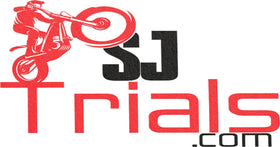To carry out adjustments and routine maintenance of your shock absorber, you will need the following tools:

1.1 Spring preload adjustment
• To adjust the spring preload, release locknut 1 and then screw or unscrew nut 2.
One turn corresponds to one millimetre of preload.
• Once the adjustment has been made, hold nut 2 and lock nut 1

1.2 Change of spring
• Unscrew locknut 1 and nut 2 to the stop
• Apply pressure to the spring and remove the snap ring

• Then remove the cup 4 and the spring
• Replace the spring with the one adapted to the weight of the rider. See the table below


1.3 Hydraulic settings

The shock absorber is of the "three-way" type, i.e. it has three hydraulic adjustment channels: rebound, low speed compression and high speed compression.
The aim of the hydraulic settings is to use the full stroke of the shock without bottoming out - or very rarely andto give the rear wheel grip, but also to maintain the correct chassis balance. The basic settings are given here but it is up to each rider to to analyse its behaviour and adjust the settings to suit their riding style.
Proceed carefully, step by step, and methodically. Change only one setting at a time by varying only a few clicks. Once validated, make a note of your setting, according to the type of track. If you get lost in the settings, go back to the basic settings and start again.
Low speed compression (gold plated 3 mm hexagonal adjustment screw)
The low speed compression allows to act on the behaviour of the shock absorber
in compression on small obstacles, or the first millimetres of stroke. By opening the low speed compression, the bike will feel smoother on small bumps and ground movements. If you want to do tricks on low bike speed, it will be easier with a more closed low speed damping.
It is located on the lower part of the damper.
High speed compression (black adjustment nut 10 mm)
The high speed compression acts essentially on larger impacts. It must be soft enough to use the full stroke of the shock without bottoming out. Turning it counter clockwise will make the damper softer..
It is located on the lower part of the shock.
Rebound
The rebound setting directly affects the traction, stability and how easy it is to move the bike on low movement speed, so if you have trouble moving the bike, open the rebound. However, a stiffer rebound adjustment will give you a more stable feeling but will decrease the traction.





